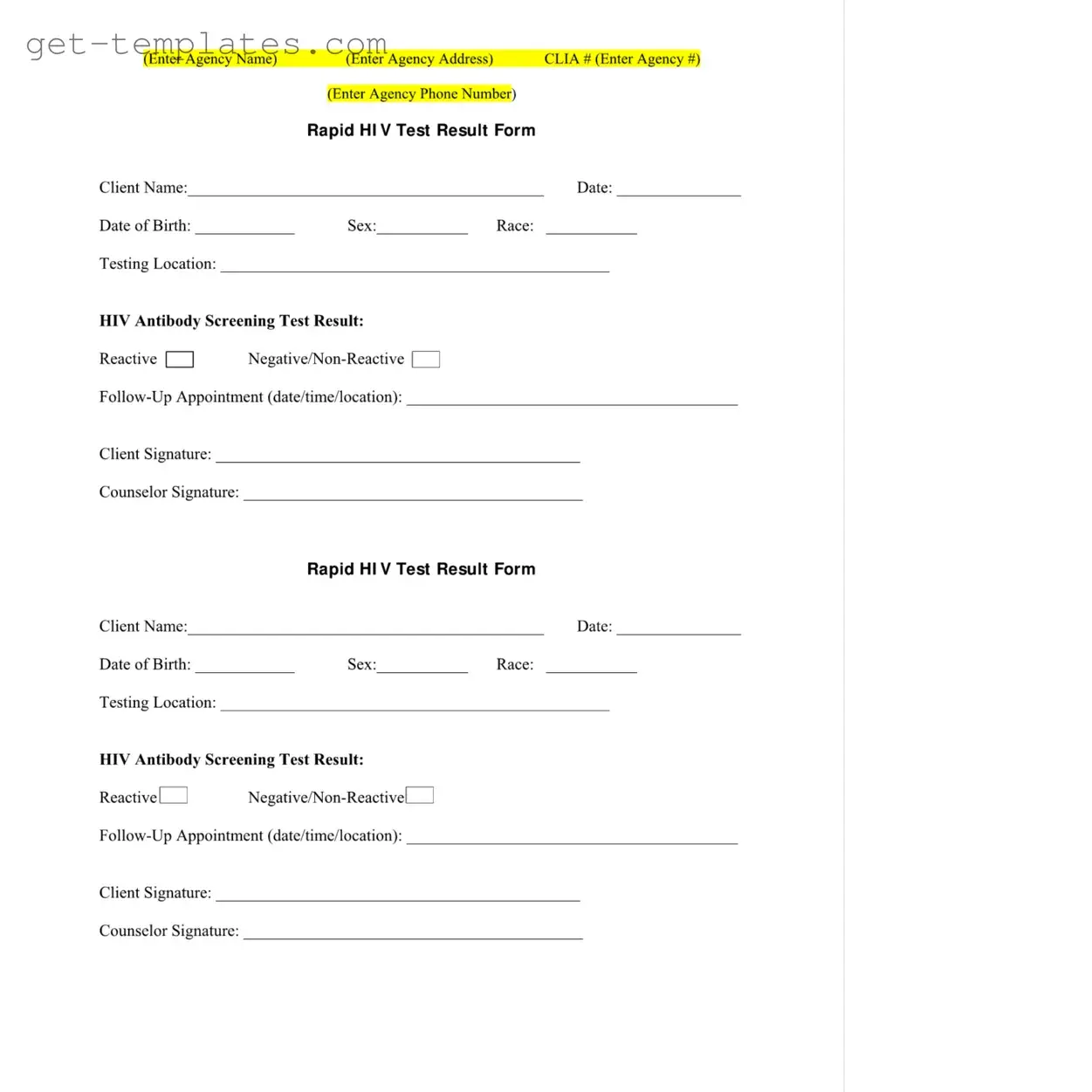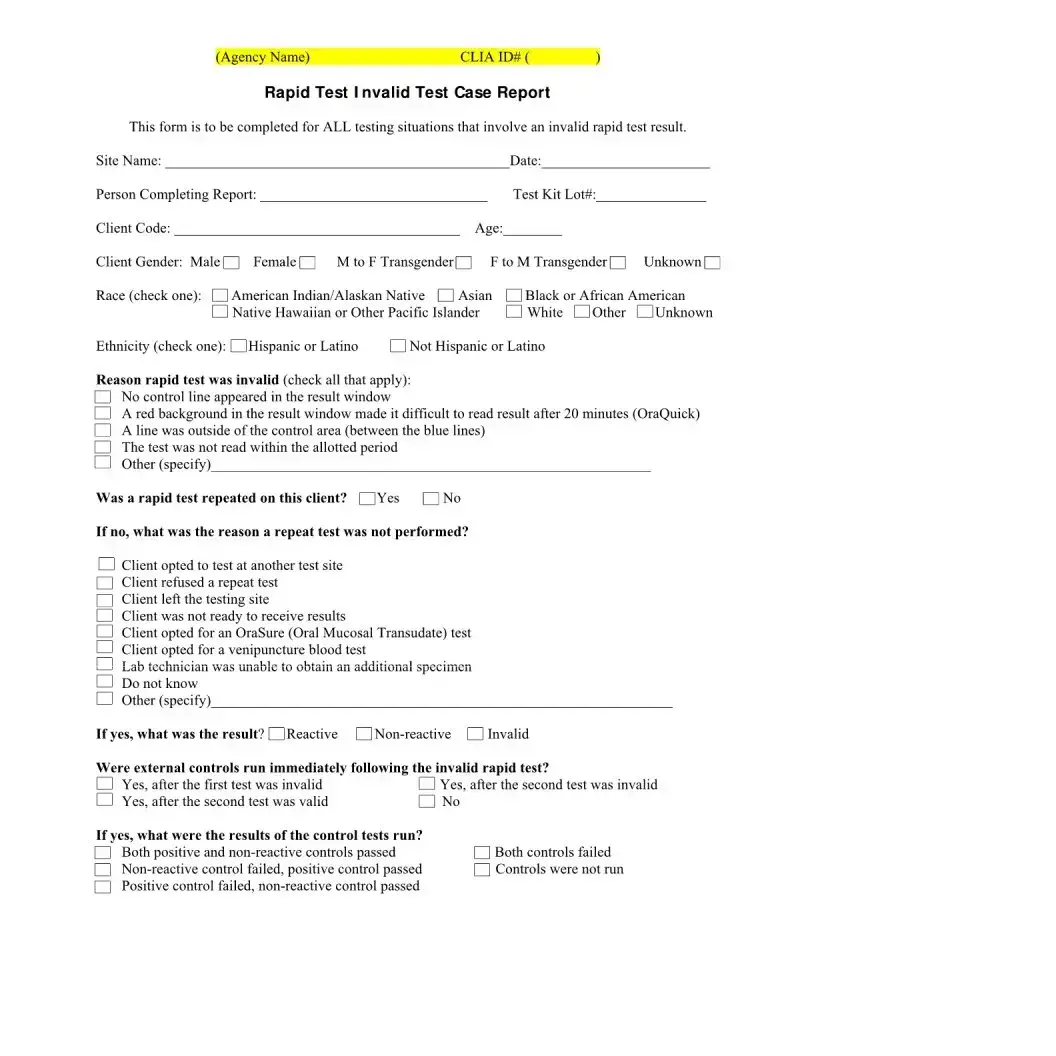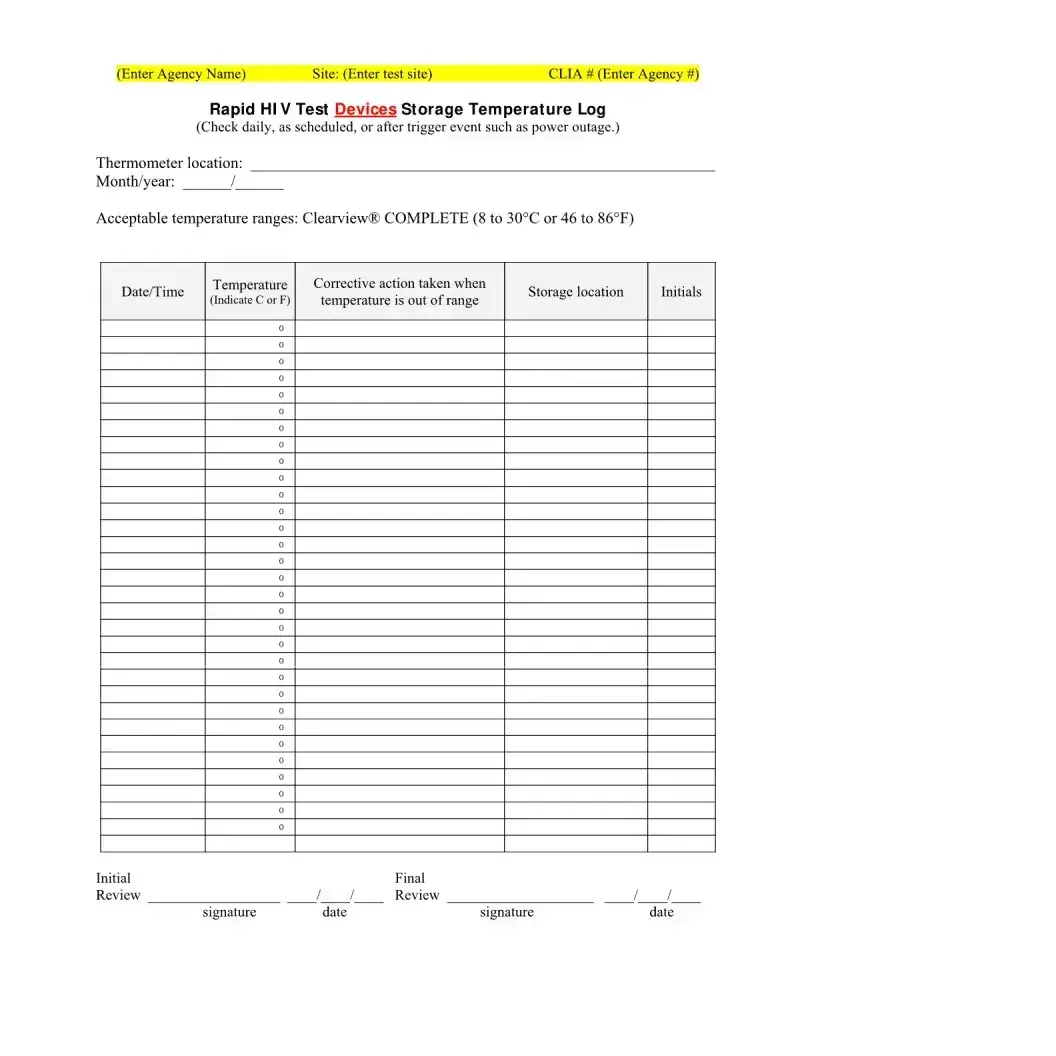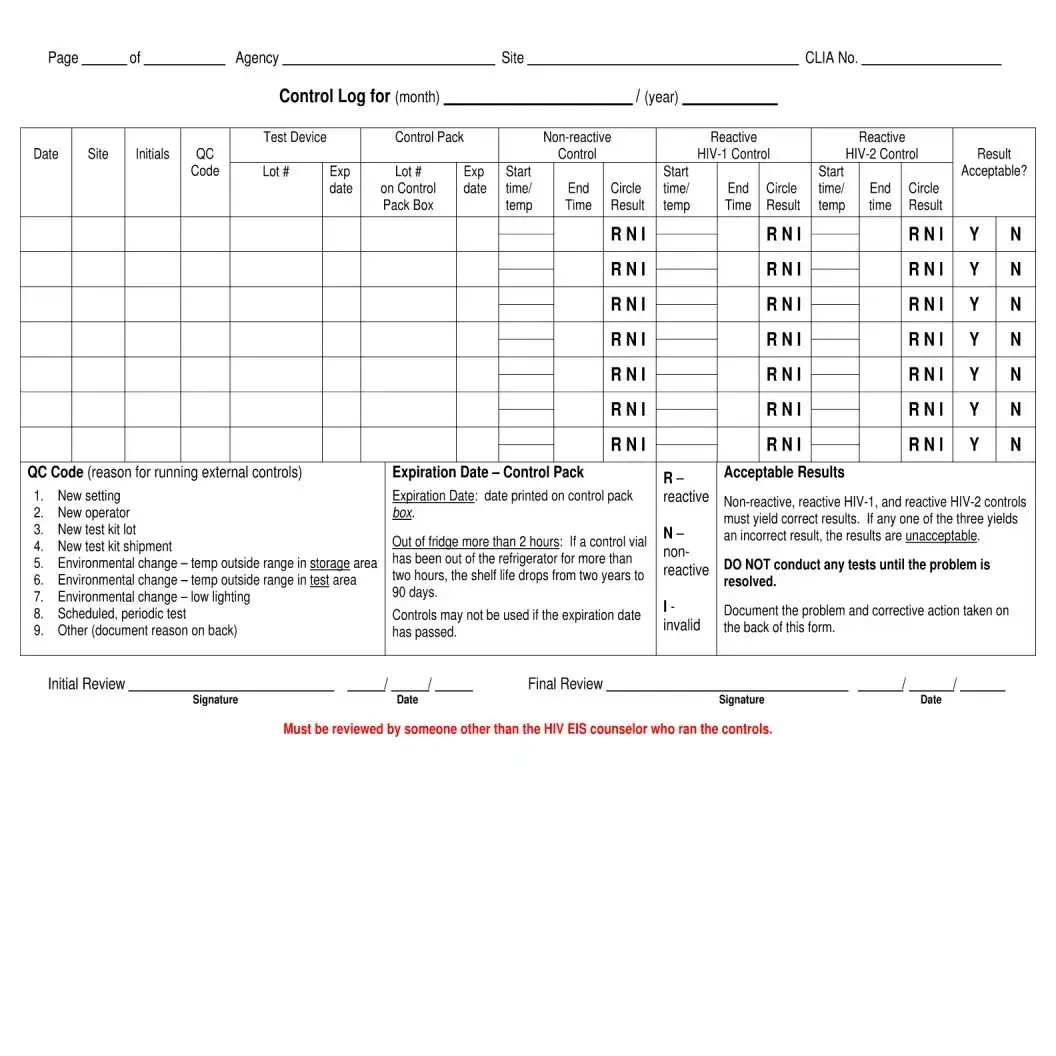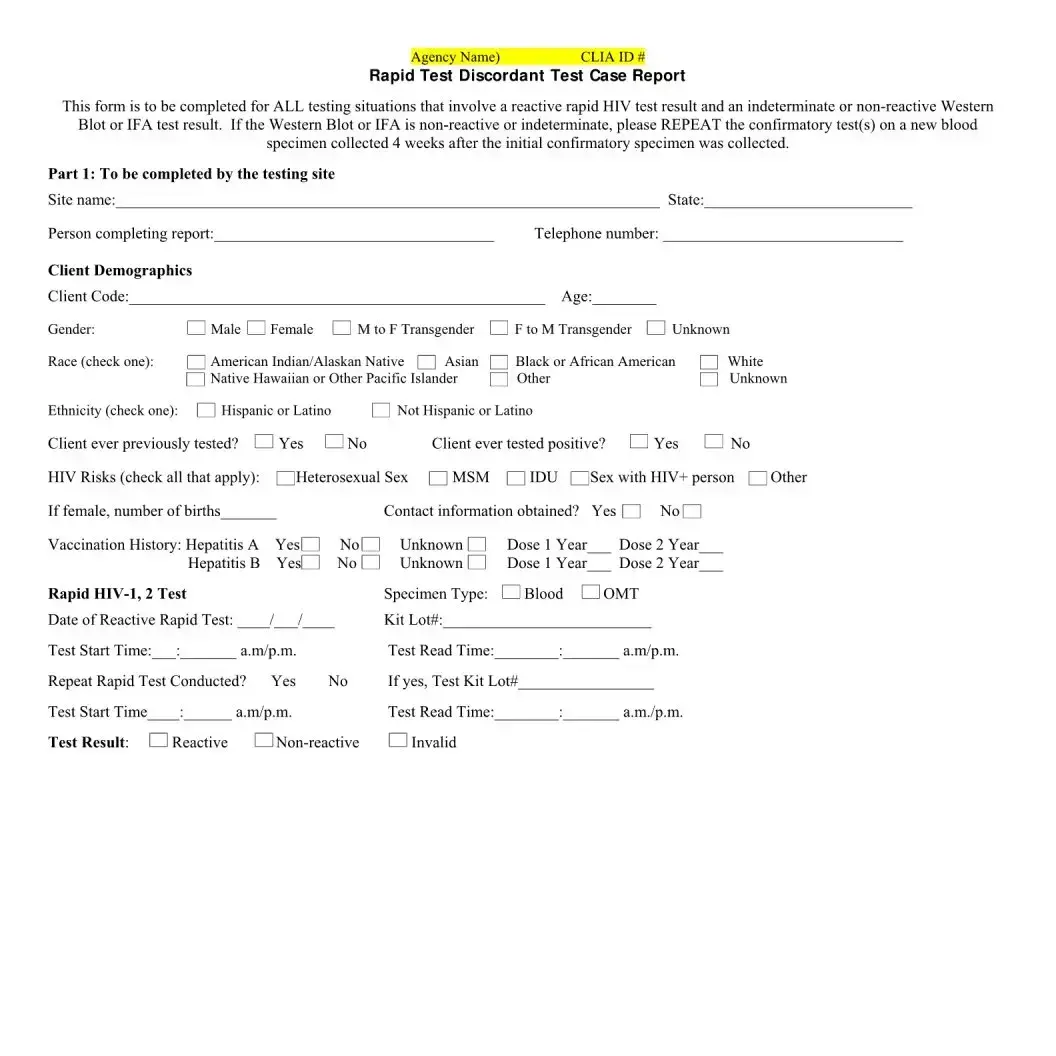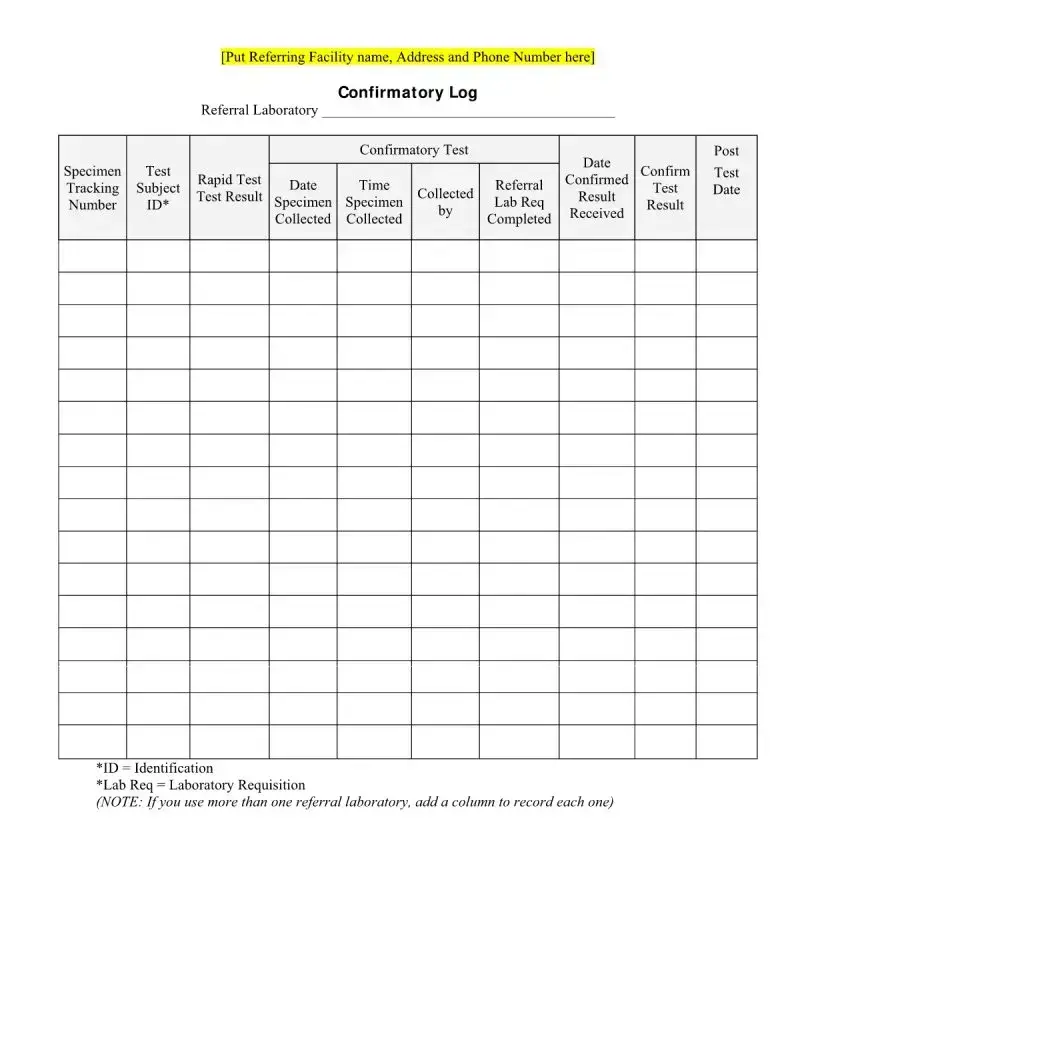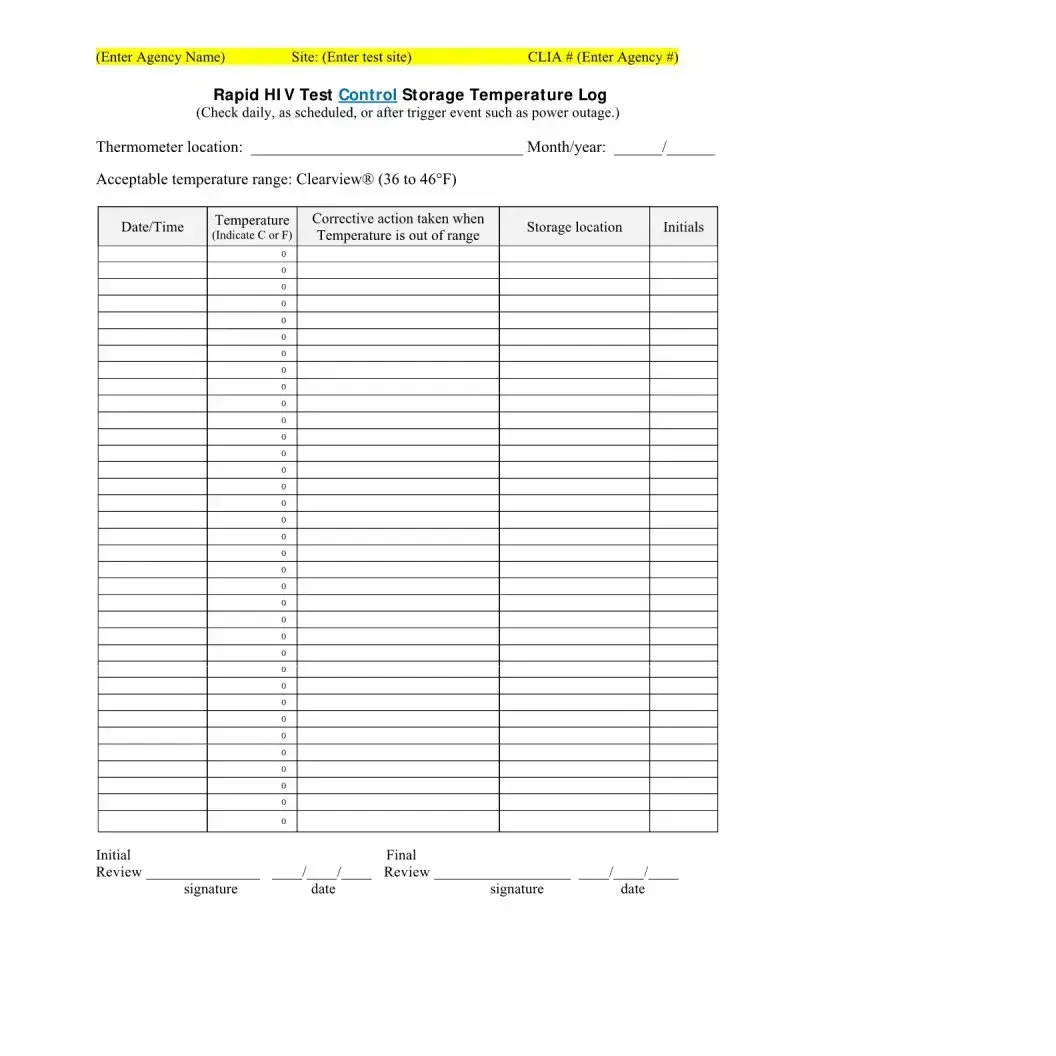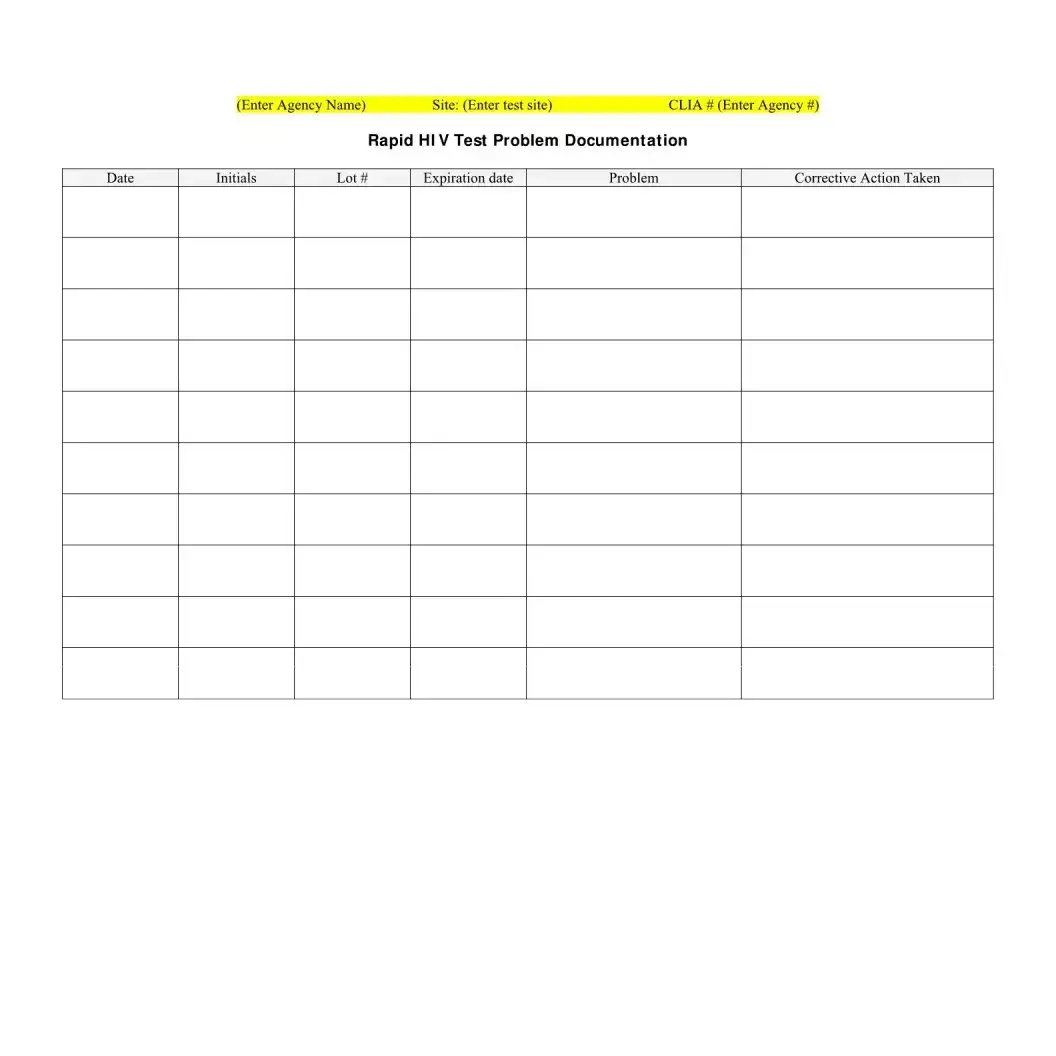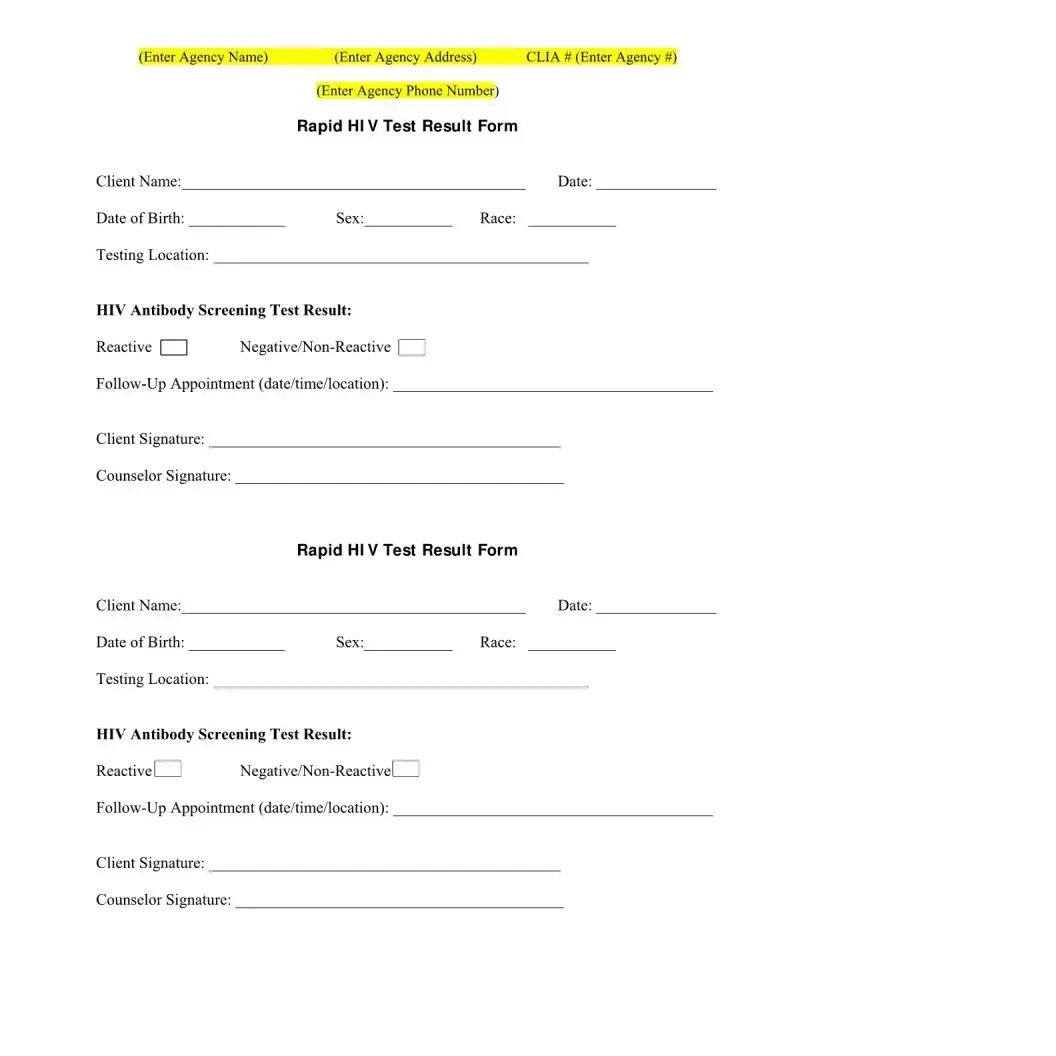The Negative HIV Test form is used to document the results of an HIV antibody screening test. It provides important information about the client's test results, ensuring that both the client and the counselor have a clear record of the outcome. This form is essential for follow-up appointments and for maintaining accurate health records.
The form requires several key pieces of information, including:
-
Client's name
-
Date of birth
-
Date of the test
-
Race
-
Testing location
-
HIV antibody screening test result (either Reactive or Negative/Non-Reactive)
-
Follow-up appointment details (date, time, and location)
-
Signatures of both the client and the counselor
Each of these elements helps ensure that the test results are correctly attributed and that the client receives appropriate follow-up care.
What does a Negative result mean?
A Negative result on the HIV antibody screening test indicates that no HIV antibodies were detected in the client's blood at the time of testing. This typically means that the client is not currently infected with HIV. However, it’s important to consider the timing of the test, as it may not detect recent infections if the test is taken too soon after exposure.
What should I do if I receive a Reactive result?
If you receive a Reactive result, it is crucial to understand that this does not confirm an HIV infection. Instead, it indicates that further testing is necessary. Follow-up tests will help determine if the initial result was accurate. It’s important to consult with a healthcare provider to discuss the next steps and any additional testing that may be required.
How is the form stored and maintained?
The Negative HIV Test form should be stored securely to protect the client's confidentiality. Agencies are responsible for maintaining these records in accordance with applicable privacy laws. Regular audits and temperature logs for testing equipment are also necessary to ensure that tests are valid and reliable.
What is the significance of the Follow-Up Appointment?
The Follow-Up Appointment is an essential part of the testing process. It provides an opportunity for clients to discuss their results, ask questions, and receive any necessary counseling or medical referrals. This appointment helps ensure that clients are informed about their health status and understand any next steps they may need to take.
If you have questions about your test results or the Negative HIV Test form, you should reach out to the testing agency directly. The contact information, including the agency's phone number, is typically provided on the form. Counselors and healthcare providers at the agency can offer guidance and support tailored to your specific situation.
